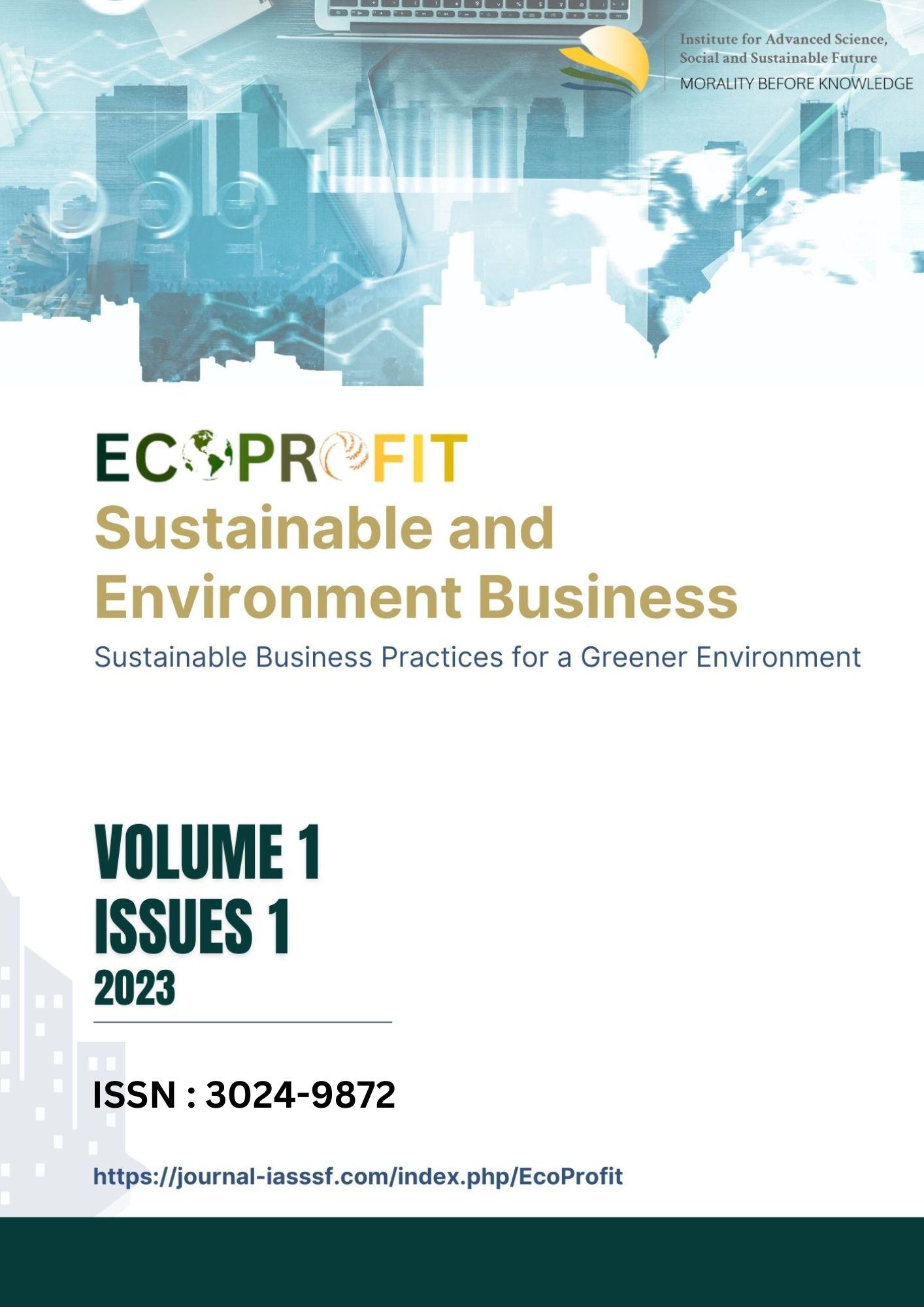Solusi pengelolaan sampah plastik: pembuatan ecobrick di kelurahan agrowisata, Kota Pekanbaru, Provinsi Riau
DOI:
https://doi.org/10.61511/ecoprofit.v1i1.2023.140Keywords:
ecobricks, plastic waste, waste managementAbstract
Indonesia is the second largest contributor of plastic waste in the world. In Indonesia, plastic waste is the second most common type after food waste. The increase in plastic waste is likely due to people's increasingly practical lifestyles and consumption patterns. Plastic and most other inorganic waste cannot be completely broken down by nature or decomposing microorganisms. The most significant contributors to waste in Indonesia are households, business centers, and traditional markets. This shows that households are important in discussing waste, both as producers and as agents of change in the future. One effort to reduce existing plastic waste is by making eco-bricks. Ecobricks are Polyethylene Terephthalate (PET) bottles filled with inorganic waste such as plastic, foam, packaging, and plastic. The benefits of eco-bricks are very diverse, such as reducing the amount of plastic waste, replacing bricks or building blocks, making various types of furniture, improving the community's economy, beautifying the environment, and using it in open spaces such as creating parks or buildings in the long term.
References
Alliance, G. E. (2019). What are Ecobricks? Ecobricks.Org. https://www.ecobricks.org/en/what.php
Antico, F. C., Wiener, M. J., Araya-Letelier, G., & Retamal, R. G. (2017). Eco-bricks: A sustainable substitute for construction materials. Revista de La Construccion, 16(3), 518–526. https://doi.org/10.7764/RDLC.16.3.518
Apriyani, A., Putri, M. M., & Wibowo, S. Y. (2020). Pemanfaatan Sampah Plastik menjadi Ecobrick. Masyarakat Berdaya Dan Inovasi, 1(1), 48–50. https://doi.org/10.33292/mayadani.v1i1.11
Asih, H. M., & Fitriani, S. (2018). Penyusunan Standard Operating Procedure (SOP) Produksi Inovasi Ecobrick. Jurnal Ilmiah Teknik Industri, 17(2), 144. https://doi.org/10.23917/jiti.v17i2.6832
Chien, L. M., Ali, R., & Marsi, N. (2022). A Comparison of Properties Between Eco-Brick and Lightweight Brick by Using Solid Works Software Malaysia. Progress in Engineering Application and Technology, 3(1), 104–111.
https://doi.org/10.30880/peat.2022.03.01.012
Chotimah, C. (2020). Pengelolaan Sampah dan Pengembangan Ekonomi Kreatif di Kawasan Destinasi Wisata Pesisir Pantai Selatan Tulungangung. Akademika Pustaka.
Chowdury, M. S. S., Haque, M. J., & Hossain, R. (2022). Green Eco-Brick, Brick Kilns Emission and It’s Environmental Impact (Issue May) [International University of Business Agriculture and Technology]. https://doi.org/10.13140/RG.2.2.32028.77449
Debrah, J. K., Vidal, D. G., & Dinis, M. A. P. (2021). Raising Awareness on Solid Waste Management through Formal Education for Sustainability: A Developing Countries Evidence Review. Recycling, 6(1), 1–21. https://doi.org/10.3390/recycling6010006
Ernis, G., Fitriani, D., & Windirah, N. (2022). Pemberdayaan Masyarakat Melalui Pengelolaan Sampah Terpadu Berbasis 3R Di Desa Rindu Hati Kabupaten Bengkulu Tengah. Jurnal Pengabdian Community, 4(3), 110–114. https://doi.org/10.25157/ag.v4i1.7173
Fajri, N. El, Muhajirin, M. R., Prendi, R., Putri, A., Clarisa, C., Ramadhani, A. D., Ulfa, N. F., Salina, A., Nurhidayat, R., Santika, S. B., & Aulia, F. (2022). Ecobrick sebagai Solusi Penanggulangan Sampah Plastik di Desa Tambak. Jurnal Pengabdian Kepada Masyarakat, 2(5). https://doi.org/10.53625/jabdi.v2i5.3582
Jalaluddin, M. (2017). Use of Plastic Waste in Civil Constructions and Innovative Decorative Material (Eco- Friendly). MOJ Civil Engineering, 3(5), 359–368. https://doi.org/10.15406/mojce.2017.03.00082
Kustina, K. T., Harta, I. G. E. S., Ariasih, P. A., Putri, K. D. A., & Sujata, M. B. (2022). Implementasi Pengolahan Sampah Anorganik dengan Metode Ecobricks di SDN Desa Marga Tabanan. Jurnal Abdimas PHB, 5(4), 755–761.
http://dx.doi.org/10.30591/japhb.v5i4.3377
Naikwadi W.M., Tolnure S.S., Ingale A.D., Ruhi A.R., Kamble P.S., & Pawar P.R. (2020). Eco-Brick Technology. International Journal on Human Computing Studies, 2(2), 65–67. www.journalsresearchparks.org/index.php/IJHCS
Pokale, S. S., Gund, P. H., Gholve, D. R., Lagad, S. K., & Chauhan, S. R. (2022). Eco-Brick : a Waste Plastic Used As Construction Material. International Research Journal of Modernization in Engineering Technology and Science, 4(5), 3318–3320.
Pratiwi, D. (2016). Pengenalan Pengolahan Sampah untuk Anak-Anak Taman Kanak-Kanak melalui Media Banner. BIOEDUKASI (Jurnal Pendidikan Biologi), 7(1), 49–54. https://doi.org/10.24127/bioedukasi.v7i1.491
Suminto, S. (2017). Ecobrick: Solusi Cerdas dan Kreatif untuk Mengatasi Sampah Plastik. PRODUCTUM Jurnal Desain Produk (Pengetahuan Dan Perancangan Produk), 3(1), 26. https://doi.org/10.24821/productum.v3i1.1735
Downloads
Published
How to Cite
Issue
Section
Citation Check
License
Copyright (c) 2023 EcoProfit: Sustainable and Environment Business

This work is licensed under a Creative Commons Attribution 4.0 International License.
















